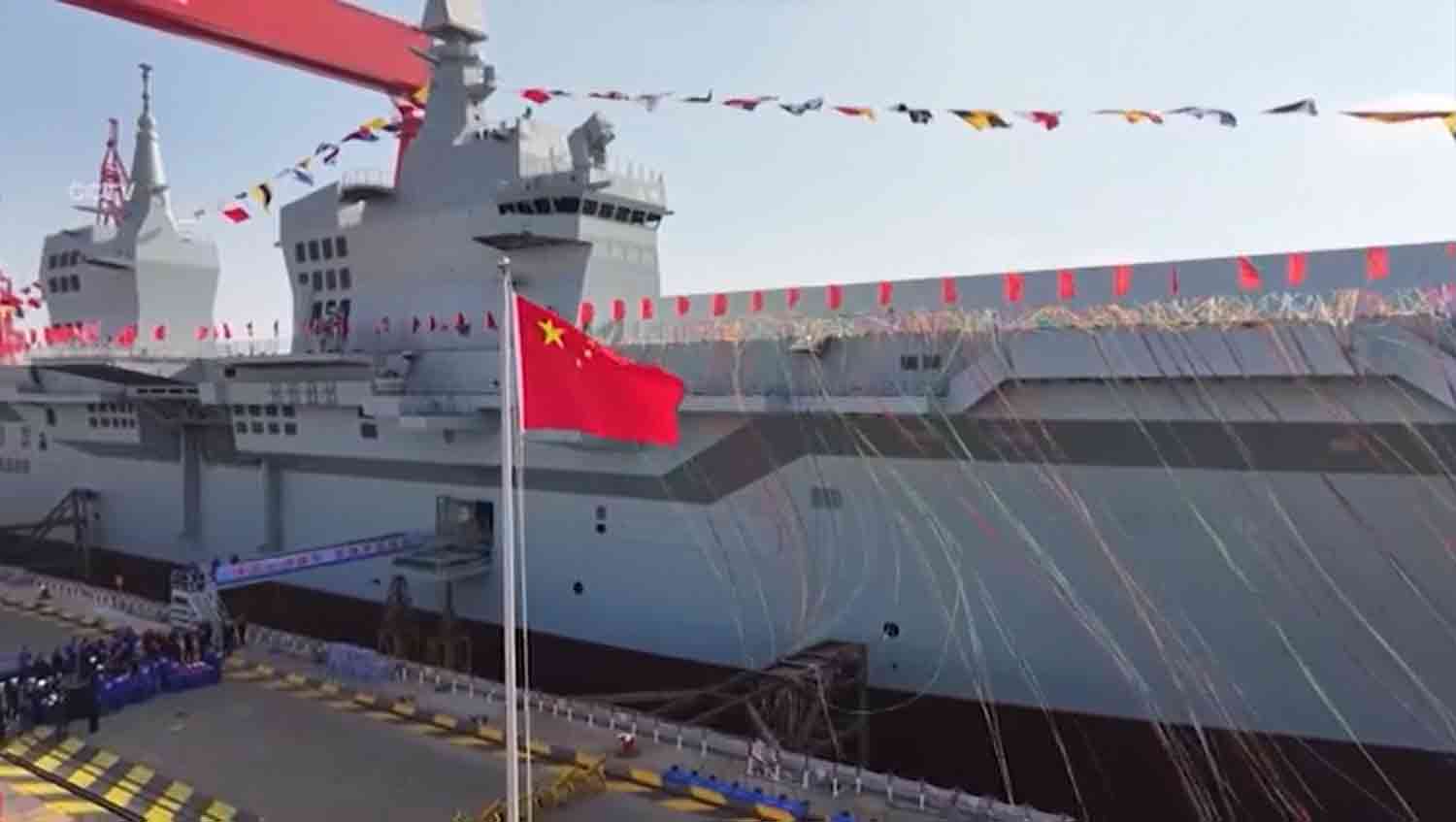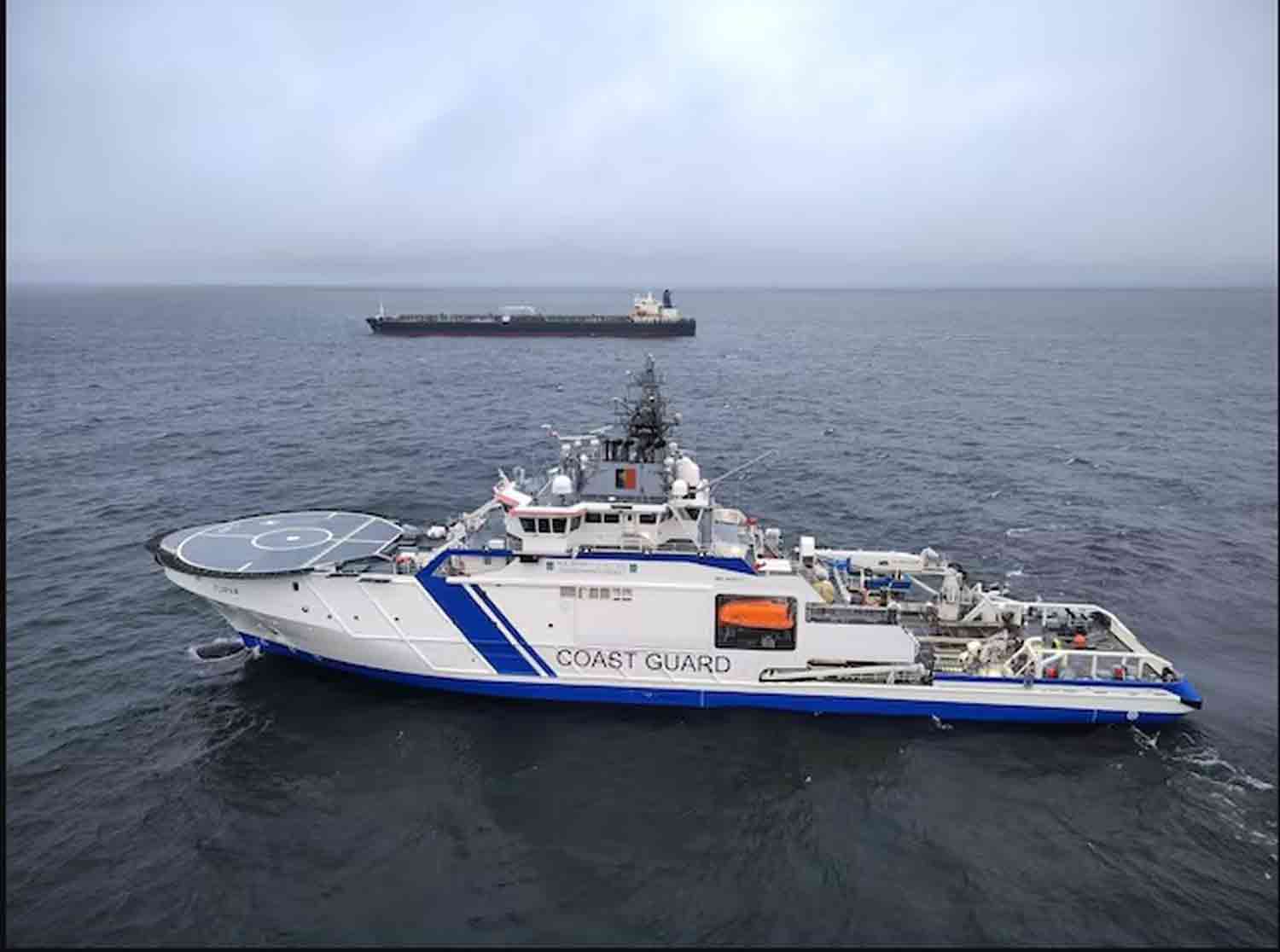China has unveiled its inaugural next-generation amphibious assault ship, significantly enhancing the capabilities of its rapidly growing navy as it aims to compete with the military strength of the United States.
The Type 076 amphibious assault ship was launched on Friday during a ceremony at a shipyard in Shanghai, as reported by the People’s Liberation Army Navy (PLAN).
Designated Sichuan, after a province in southwestern China, this domestically developed vessel is recognized as a crucial component in the Navy’s evolution and its ability to conduct long-range operations, according to the statement.
As the largest naval force globally, China is constructing aircraft carriers and large warships at an impressive rate, striving to extend its influence beyond its borders and match the military dominance of the US.
With a full-load displacement exceeding 40,000 tons, the Type 076 is among the largest amphibious assault ships worldwide, featuring a twin-island superstructure and a comprehensive flight deck, as noted by the PLAN.
Significantly, it incorporates an electromagnetic catapult system, enabling it to transport fixed-wing aircraft alongside helicopters and amphibious vehicles typically associated with this class of warship, the PLAN further stated.
The electromagnetic catapult system will allow the Type 076 to launch larger and heavier aircraft than it could without this technology. This advancement means that the aircraft can carry increased fuel loads, thereby extending their operational range and enhancing the ship’s capabilities as a combat platform. Additionally, the aircraft will be able to transport more bombs or missiles, significantly increasing their lethality.
Currently, only one other warship globally, the USS Gerald R Ford, the latest aircraft carrier of the US Navy, utilizes the electromagnetic catapult system.
China’s newest aircraft carrier, the Fujian, which is undergoing sea trials and has not yet been commissioned, is also equipped with an electromagnetic system.
The amphibious assault ships of the US Navy are designed to operate the F-35B, a short-takeoff and vertical landing variant of the stealth fighter jet utilized by the US Navy, Marine Corps, and Air Force.
As of now, the PLA Navy does not possess a manned counterpart to the F-35B, which may lead to the deployment of similar fixed-wing aircraft on the Fujian.
However, a report released earlier this year by the Center for Strategic and International Studies indicates that the Type 076 could serve as a significant drone platform.
“If it is limited to unmanned systems, the Type 076’s air wing will be highly capable. China boasts an advanced and growing arsenal of UAVs, including the GJ-11 stealth combat drone, the WZ-7 reconnaissance drone, and the CASC Rainbow strike UCAV, among others,” states the August report from CSIS, which was informed by satellite imagery of the ship during its construction.
The CSIS report highlights that the Type 076 is anticipated to include a range of helicopters and amphibious landing craft, with the latter having the capacity to deploy over 1,000 marines.
Due to its substantial size, the Type 076 is expected to accommodate more resources compared to China’s smaller Type 075 amphibious assault ships, the US Navy’s America-class amphibious assault ships, and Japan’s Izumo-class helicopter carriers, which are currently being modified to support the F-35B.
Carl Schuster, a military analyst and former US Navy captain, emphasized that the size of the Type 076 is significant.
“This reflects the PLA Navy’s dedication to expeditionary and amphibious warfare, as well as an increasing capability in this area,” he noted, pointing out the implications for the rivalry between the world’s two largest naval forces, China and the United States.
“It illustrates China’s advancing maritime power projection capabilities at a time when the US Navy’s focus and ability to conduct expeditionary, amphibious, and humanitarian assistance operations have notably declined,” Schuster added, having previously served as the director of operations at the US Pacific Command’s Joint Intelligence Center.
Discover more from Defence Talks | Defense News Hub, Military Updates, Security Insights
Subscribe to get the latest posts sent to your email.





